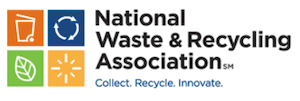
Extended Producer Responsibility
INTRODUCTION
Challenges with recycling have resulted in increased efforts to pass legislation at both the federal and state level advocating for extended producer responsibility (EPR). While well intentioned, many of these bills fail to address the root of the problems and also overlook existing recycling programs and their achievements.
DISCUSSION
Americans want accessible and effective recycling. They want sustainable products that support the circular economy. However, recycling is struggling. There are five major issues facing recycling right now:
- insufficient demand for some recyclables
- low prices for the combined recycling stream
- consumer behavior challenges
- public concern over plastic in the environment
- inexpensive virgin resources
The last twenty-five years of legislative history on recycling has been focused primarily on creating supply – without consideration of adequate end markets. Given that, our recycling system has been set up to continuously generate material even when demand falls and prices drop. Any legislation that proposes to address recycling issues needs to first focus on correcting this problem by incentivizing the demand for recyclables, rather than continuing to focus only on adding supply.
Demand is key!
Until 2018, China’s growing economy provided demand for recyclables from across the globe, including a significant portion of America’s recyclables. This material was not dumped on China; rather Chinese companies paid to acquire these materials as feedstock to produce the products and packages that they sold to the U.S. and other countries. However, when the Chinese government banned some of the materials, demand for mixed paper and mixed plastics fell and the prices for these commodities plummeted accordingly. As its quality requirements and import licenses for cardboard have constricted, the Chinese market has declined as an option for recyclables.
Recyclables can continue to be collected and sorted – however, every seller needs a buyer. Without end markets, material will not be recycled. Recycling legislation can create demand by requiring packaging to have post-consumer recycled content. This will spur demand for more material, increasing the value of recyclables, strengthen the domestic recycling market, and help offset the cost of recycling.
Low prices
Historically, the commodity value from municipal recycling programs offset much of the cost of processing the material for sale; and in some cases, municipalities saw a net benefit from the sale of recyclable commodities. However, when the markets for recyclables decline, prices drop – sometimes to negative levels. Because paper is 60% of the curbside recycling stream, the price of paper has a high impact on all recycling programs. Increased demand for paper, as well as plastic and other materials, will stabilize prices making recycling sustainable in municipalities struggling with increased costs and unable to find markets for their materials.
Consumer behavior
Reducing contamination will improve recycling. This can be done by harmonizing recycling lists, reducing confusion, providing feedback to consumers through education and cart tagging, and providing clear and accurate labeling on packaging and recycled materials. Materials need to be truly recyclable. The myth that recycling is free of charge needs to be combated and consumers must understand that there is a true cost for recycling that is not mitigated by commodity values alone.
Public pressure associated with plastic waste in the environment
Ocean plastics are predominantly from developing countries with inadequate infrastructure. Most National Waste & Recycling Association (NWRA) members sell residential plastics domestically and many no longer export plastic recyclables. The Alliance to End Plastic Waste estimates that more than 90% of ocean debris originating from rivers comes from just ten rivers – eight in Asia and two in Africa. Ideally, municipal plastic recyclables should only be exported to developed countries to reduce the potential of mismanagement of exported material.
NWRA POSITION
In order to address the challenges outlined above, NWRA prefers efforts focused on increasing demand for recyclable materials to allow market forces to incentivize recycling. Increased use of post-consumer content is an essential component to increased demand. In circumstances where these efforts are not sufficient to increase demand, EPR may be considered. When EPR is proposed, NWRA supports the following:
- Recycling legislation should seek to support and invigorate existing recycling systems by strengthening them rather than upending them with duplicative and unnecessary programs.Such legislation should focus on investment in infrastructure and incentives to create new markets for recycled materials.
- Recycling legislation should consider how to improve end market demand focused on inclusion of incentives for use of post-consumer materials. This extends beyond processing and mills and includes the products and goods we purchase and use every day. Minimum content requirements should be established based on material type.
- Federal, state, and local governments should incorporate post-consumer materials in their purchase requirements where appropriate.
- State and local governments should retain control over their recycling programs. Local stakeholders understand the needs and complexities of their communities and are the most adept at finding solutions.
- Producers should assume responsibility for their packaging by considering the end-of-life when designing packaging. Packaging should be designed to promote recycling and sustainable outcomes.
- The cost of EPR should be borne by the product manufacturers/brands.
- The preferred model for EPR should be as a Stewardship Responsibility Organization (SRO) system that is inclusive of the recycling supply chain. The non-profit SRO should be made up of equal representation from state government, local government, recycling collectors, recycling processors and producers/brands. This is critical to ensure consideration of the entire value chain. The SRO should distribute funds to local governments to support recycling programs.
- State legislation should place responsibility on the SRO to improve recycling by harmonizing lists, encouraging investments in end markets for materials, coordinating education and enforcement, supporting the improvement of existing collection and processing infrastructure, and supporting litter cleanup.
Updated June 2021.

